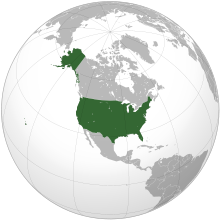How To Make Our Embassies Safer – OpEd
By Other Words
By Miriam Pemberton
The deaths of our diplomats in Benghazi turned the national spotlight where it doesn’t often go — to the security around our embassies and how much we spend on it.
In the overheated atmosphere of the election endgame, Republican candidate Mitt Romney and his congressional allies immediately grabbed at the politically expedient conclusion. Clearly, they said, this showed President Barack Obama’s neglect of security in general and the safety of our embassies in particular.

The Obama administration retorted that this sudden concern for embassy security hardly squared with the budgets crafted by Romney’s running mate, Rep. Paul Ryan (R-WI). In fact, Ryan’s budget would slash the amount the State Department can use for exactly this purpose.
Numbers are flying fast and furiously in this campaign. So we need to nail down as many as we can.
That’s why I lead a team that tracks what Washington spends on security each year and what exactly this money buys. This annual Unified Security Budget of the United States looks at the balance of what we spend on military forces compared to such preventive medicine as diplomacy, international economic development, peacekeeping forces, homeland defenses, efforts to prevent nuclear terrorism, and measures to stabilize the climate.
Our findings in a nutshell: The Obama administration’s budget for last year gave the military $7.30 for every dollar it spent on all non-military security tools put together. Obama’s proposed 2013 budget would improve on this record a bit, paring the military’s share to $6.70 for every dollar spent on all the rest.
This is still a security budget out of balance. So the task force I lead, comprised of experts in each security category, lays out a plan to shift resources from military programs we don’t need to investments in the non-military security tools we do. That includes more money for embassy security as well as for hiring and training more diplomats for the vital work they do in helping to prevent violent conflict.
The largest portion of the new investment we support would be made in programs to stabilize the climate. The military itself has identified climate change as a major security threat for years. The climate-related food shortages caused by unprecedented drought this year, for example, are potent drivers of conflict. The good news is that U.S. investments in climate-stabilizing technology can also be major job creators.
What would the security budget look like if Mitt Romney becomes president? No firm figures are possible, since he’s been so vague about his plans, as well as remarkably unconstrained, moment to moment, by anything he’s said previously on any issue.
But here’s what he’s said (many times) previously: We need to direct 4 percent of the nation’s Gross Domestic Product into military spending. Why? It’s not clear. But the non-partisan analysis of the Tax Policy Center has calculated that if we were to do that, we’d add $2 trillion to our deficit over the coming decade.
And if his running mate has anything to say about it, the International Affairs budget — funding most of our non-military engagement with the world — will be sacrificed.
In the matter of the balance of our security budget, as in nearly every matter of national policy, the choices are not perfect, but they are clear.
Miriam Pemberton is a research fellow at the Institute for Policy Studies. With Lawrence Korb of the Center for American Progress, she leads the team that produces the Unified Security Budget for the United States.
